|
HOME: www.hiltonpond.org |
|||
|
All text & photos © Hilton Pond Center TULIPS FROM THE TREETOPS In our most recent photo essay we described five native plants that flower in early spring just in time to meet the needs of our first migrant Ruby-throated Hummingbirds. By late April yet another nectar-producing plant comes into flower as hummers increase in number, but because its blossoms typically form at treetop level we've never had a good chance to photograph them at Hilton Pond Center. While Honey Bees, high-flying hummingbirds, and native insect pollinators definitely have access to the flowers' copious nectar--we don't own a tall enough ladder! This week when strong winds and a little hail knocked quite a few blooms from one of our biggest trees, we finally were able to get images of inflorescence from a tall hardwood we prefer to call Tulip Tree. After our long-awaited success at getting these photos, we're also including a couple sent to us several years ago by long-time friend and high school biology student Fred Nims, who captured his images with a cell phone camera out in Nashville TN.
All text & photos © Hilton Pond Center Tulip Tree goes by several aliases, including Yellow Poplar and Tulip Poplar, but it's not a poplar at all. Poplars are in the genus Populus in the Willow Family (Salicaceae). Tulip Tree's scientific name is Liriodendron tulipifera, loosely translated as "tulip-bearing lily tree." Tulip Trees aren't tulips either, of course, nor are they lilies;
All text & photos © Hilton Pond Center Tulip Trees are still a common native sylvan species east of the Mississippi River from northern Florida to southern New York State, but once they were the tallest of tall trees in the Piedmont and Appalachians--reaching a dizzying height of 190 feet. (Tulip Trees are dwarfed by the biggest trees on earth--those Giant Redwoods of the Pacific Coast that are twice as tall--but 190 feet is still getting up there!)
All text & photos © Hilton Pond Center Although most of the truly enormous Tulip Trees were felled during the post-settlement logging era, a few biggies remain in isolated tracts in North Carolina--as in Joyce Kilmer Memorial Forest (above)--and in Great Smoky Mountains National Park, Alabama, and other areas less accessible to the lumberman's saw. These behemoths tower above understory trees, amny of which are slowly growing saplings block from much-needed sunlight by the taller Tulip Trees.
All text & photos © Hilton Pond Center According to the National Register of Big Trees, Chesapeake VA is home to the current Tulip Tree "national champion" (above), a title derived from its combination of height (115 feet), trunk circumference at breast height (359 inches--almost 30 feet!), and spread of the branches (83 feet). Other taller Tulip Trees exist, but none have such total presence. Our hope is that some of the many specimens planted today as shade trees will someday grow to giant heights.
All text & photos © Hilton Pond Center Young Tulip Trees have interesting gray bark with a greenish tint and marked with long white lines (above); we've always wondered if this relatively smooth bark carries out any "bonus" photosynthesis that would give a fast growing sapling an advantage. (That said, it may be the green actually is from colonies of crustose lichens that typically grow on Tulip Tree bark.) Here in the Carolina Piedmont the Tulip Tree is an early successional plant that often sprouts in habitats also populated by Sweetgum and Winged Elm--but only if there is sufficient water. In fact, this moisture-loving hardwood often grows best in well-drained bottomlands and on the slopes bordered rivers and streams. All text & photos © Hilton Pond Center After about 15 years or so the Tulip Tree's bark begins to turn gray-brown and becomes woody with long vertical furrows (above left). Note there are no limbs on this tall Tulip Tree until close to its top, where the tree branches into the canopy to expose broad leaves to available sunlight. It's not uncommon for a really ancient Tulip Tree to show its age--and its tenacity--in the form of a fire scar. The old wound on the New York tree above right is more than six feet high; this opening decreases slightly in size each year as the tree tries to cover the damage but likely never will heal completely. Such fire-scarred Tulip Trees remain hollow and some reportedly had cavities so large early settlers could stable a cow or two inside during inclement weather!
All text & photos © Hilton Pond Center It's interesting that in their 19th century renderings of the Baltimore Oriole, both Mark Catesby (above left) and John James Audubon (above right) chose the Tulip Tree as floral enhancements for their bird paintings. We doubt Audubon was copying his ornithological predecessor; instead we suspect both men knew two things: 1) Baltimore Orioles often build hanging nests in the highest treetops available; and, 2) throughout the eastern hardwood forest it was crowns of towering Tulip Trees that stood above the rest of the canopy.
All text & photos © Hilton Pond Center After the petals and sepals drop from the Tulip Tree blossom each fertilized flower makes a green cone, as shown at lower left in the engraving above for François Andre Michaux's landmark North American Sylva. (Michaux--one of our greatest botanists--wrote in 1859 that the Tulip Tree "surpasses most others in height and in the beauty of its foliage and its flowers." It "is also one of the most interesting from the numerous and useful applications of its wood" that is "easily wrought and polishes well. Tulip Tree lumber was used in furniture and the panels of horse-drawn coaches, while Native Americans dug out the trunks to make long-lasting canoes of relatively light weight.)
All text & photos © Hilton Pond Center Each successful Tulip Tree cone dries and hardens as the seasons progress and by autumn bursts open to release a dozen or so papery samaras (above) that are easily disseminated by the wind. In many locales these winged seeds are important winter forage for Eastern Gray Squirrels, Northern Cardinals, and Purple Finches.
All text & photos © Hilton Pond Center When autumn comes the green foliage of the Tulip Tree gives way to a brilliant pale yellow (above)--the result of chlorophyll decomposing and revealing carotene pigments that have been hidden all summer. Eventually these yellow leaves turn brown and fall from the tree, adding to the richness of the forest soil and providing nutrients that allow a new Tulip Tree generation to germinate and grow.
All text & photos © Hilton Pond Center As cold weather arrives we can identify our Tulips Trees at Hilton Pond Center even from a distance because each still bears empty tulip-shaped cones (above). Each cone is a mid-winter reminder it accomplished its all-important task of making new trees that perhaps 30 springs later will show off their own "tulips from the treetops." All text & photos © Hilton Pond Center
|
|---|
 The Piedmont Naturalist, Volume 1 (1986)--long out-of-print--has been re-published by author Bill Hilton Jr. as an e-Book downloadable to read on your iPad, iPhone, Nook, Kindle, or desktop computer. Click on the image at left for information about ordering. All proceeds benefit education, research, and conservation work of Hilton Pond Center for Piedmont Natural History. The Piedmont Naturalist, Volume 1 (1986)--long out-of-print--has been re-published by author Bill Hilton Jr. as an e-Book downloadable to read on your iPad, iPhone, Nook, Kindle, or desktop computer. Click on the image at left for information about ordering. All proceeds benefit education, research, and conservation work of Hilton Pond Center for Piedmont Natural History. |
|
|
"This Week at Hilton Pond" is written and photographed by Bill Hilton Jr., executive director of Hilton Pond Center for Piedmont Natural History
|
|
|
Please refer "This Week at Hilton Pond" to others by clicking on this button: |
Comments or questions about this week's installment? Send an E-mail to INFO. (Be sure to scroll down for a tally of birds banded/recaptured during the period, plus other nature notes.) |

Click on image at right for live Web cam of Hilton Pond,
plus daily weather summary
Transmission of weather data from Hilton Pond Center via WeatherSnoop for Mac.
|
--SEARCH OUR SITE-- For a free on-line subscription to "This Week at Hilton Pond," send us an |
|
Thanks to the following fine folks for recent gifts in support of Hilton Pond Center for Piedmont Natural History and/or Operation RubyThroat: The Hummingbird Project. Your tax-deductible contributions allow us to continue writing, photographing, and sharing "This Week at Hilton Pond." Please see Support if you'd like to make a gift of your own.
|
If you enjoy "This Week at Hilton Pond," please help support Hilton Pond Center for Piedmont Natural History. It's painless, and YOU can make a difference! (Just CLICK on a logo below or send a check if you like; see Support for address.) |
|
Make credit card donations on-line via Network for Good: |
|
Use your PayPal account to make direct donations: |
|
If you like shopping on-line please become a member of iGive, through which 950+ on-line stores from Amazon to Lands' End and even iTunes donate a percentage of your purchase price to support Hilton Pond Center.  Every new member who registers with iGive and makes a purchase through them earns an ADDITIONAL $5 for the Center. You can even do Web searches through iGive and earn a penny per search--sometimes TWO--for the cause!Please enroll by going to the iGive Web site. It's a painless, important way for YOU to support our on-going work in conservation, education, and research. Add the iGive Toolbar to your browser and register Operation RubyThroat as your preferred charity to make it even easier to help Hilton Pond Center when you shop. Every new member who registers with iGive and makes a purchase through them earns an ADDITIONAL $5 for the Center. You can even do Web searches through iGive and earn a penny per search--sometimes TWO--for the cause!Please enroll by going to the iGive Web site. It's a painless, important way for YOU to support our on-going work in conservation, education, and research. Add the iGive Toolbar to your browser and register Operation RubyThroat as your preferred charity to make it even easier to help Hilton Pond Center when you shop. |
|
BIRDS BANDED THIS WEEK at HILTON POND CENTER 11-26 April 2012 |
|
|
SPECIES BANDED THIS WEEK: * = New species for 2012 WEEKLY BANDING TOTAL 11 species 30 individuals 2012 BANDING TOTAL 14 species 237 individuals 31-YEAR BANDING GRAND TOTAL (since 28 June 1982, during which time 170 species have been observed on or over the property) 125 species (31-yr avg = 66.3) 57,325 individuals (31-yr avg = 1,849) NOTABLE RECAPTURES THIS WEEK Carolina Wren (1) White-throated Sparrow (2) Eastern Tufted Titmouse (4) Eastern Bluebird (1) Downy Woodpecker (1) House Finch (9) All text & photos © Hilton Pond Center |
OTHER NATURE NOTES:
All text & photos © Hilton Pond Center --Our first spring migrant parulid--a brightly plumaged male Hooded Warbler--and the year's first Luna Moth (above) appeared simultaneously at 5:45 p.m. on 16 Apr. Oddly, they were caught in the same mist net and both were safely extracted and released. (We banded the warbler, of course, just our 51st HOWA in 31 years at Hilton Pond Center.) --Glance to the left and you'll see a substantial list of "old" birds we trapped or netted this week; there were 24 of them--almost as many as our 30 newly banded individuals. Although we make recaptures throughout the year at Hilton Pond Center it seems their numbers grow in spring when both males and females are out and about with the busy-ness of courting, mating, and raising young. What's particularly interesting is nearly all the year-round residents (e.g., Carolina Chickadees, Eastern Tufted Titmice, and Northern Cardinals) were caught the first time as locally produced youngsters and they've never dispersed. By comparison, almost all the House Finches were banded as adults at various times of the year and apparently haven't roamed very far, either. All text & photos © Hilton Pond Center |


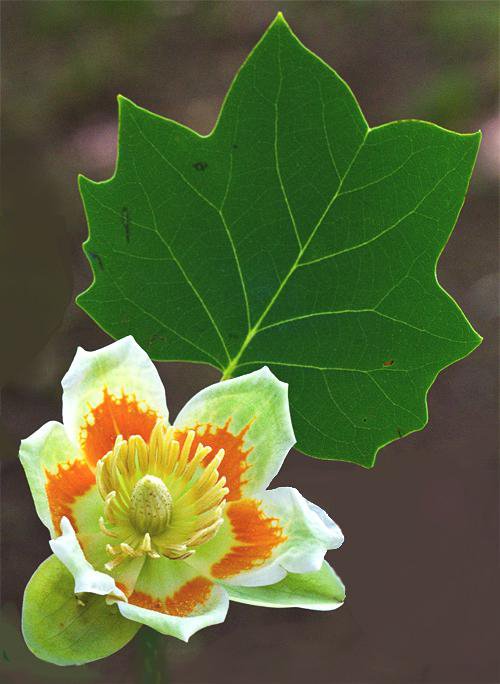
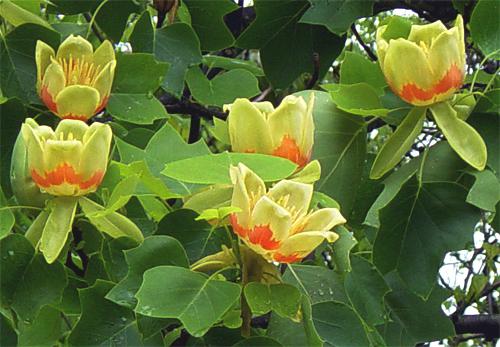
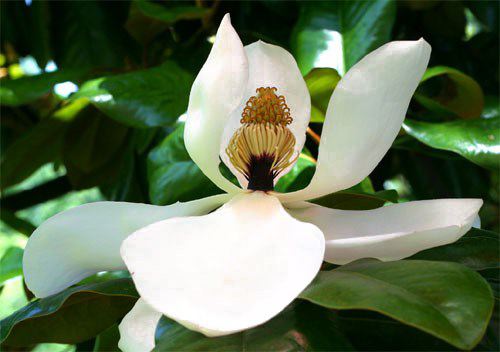 in fact--and many people are surprised by this--they're actually in the Magnolia Family
in fact--and many people are surprised by this--they're actually in the Magnolia Family 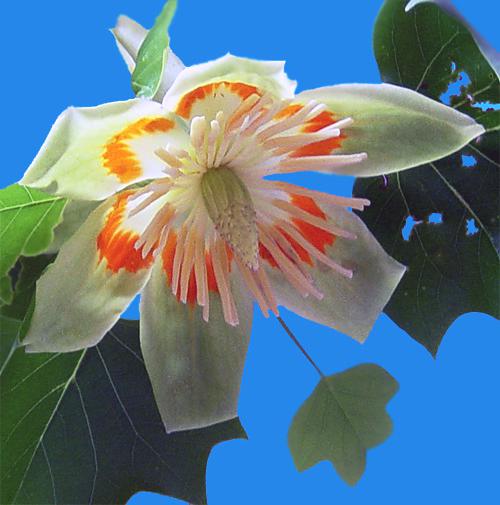
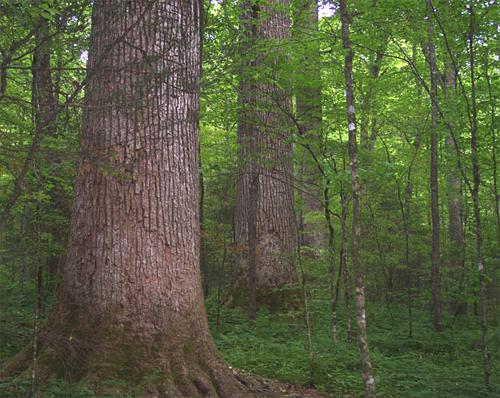
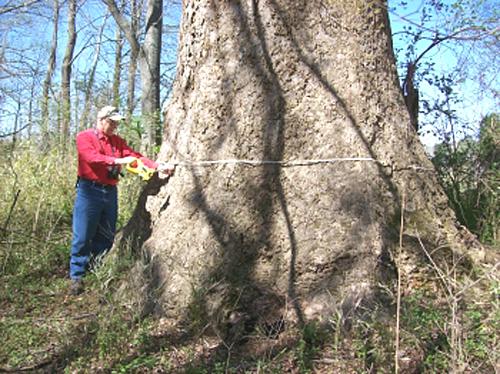
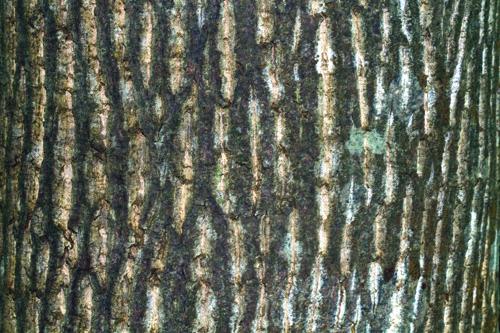
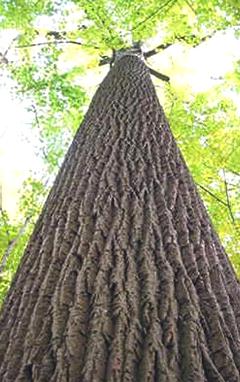 .
. 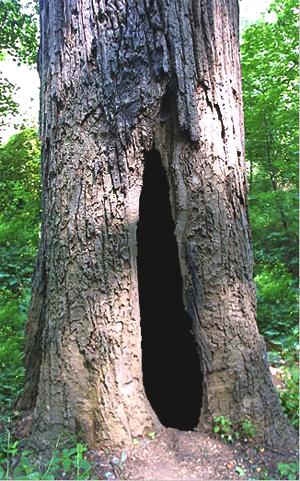
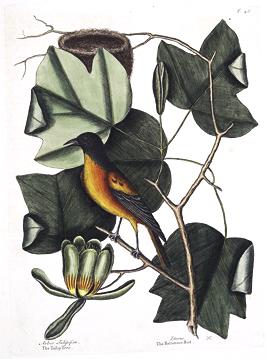 .
. 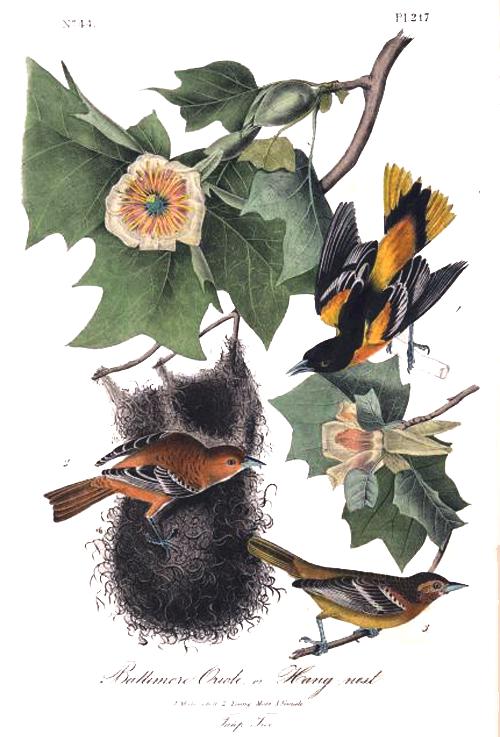
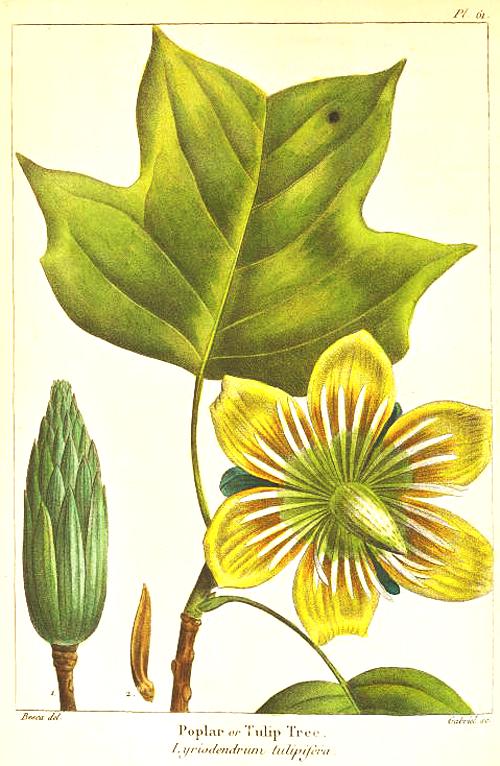
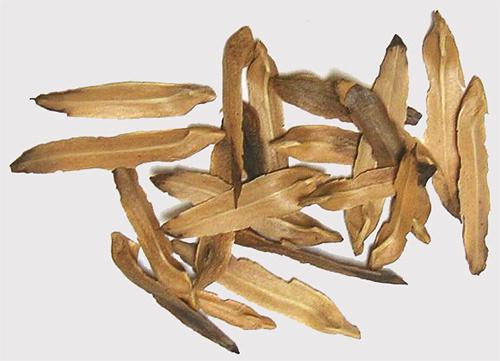
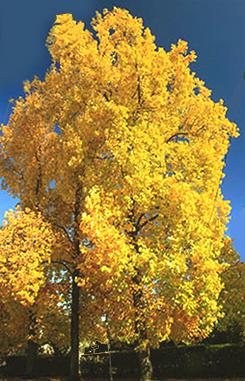
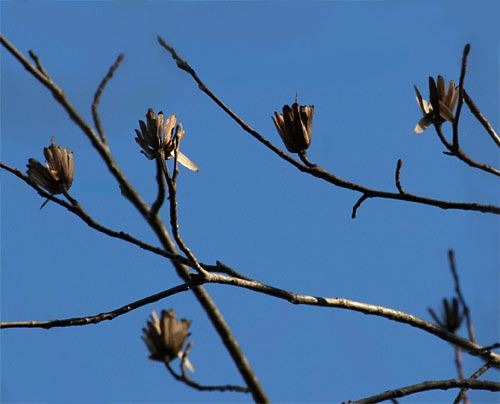

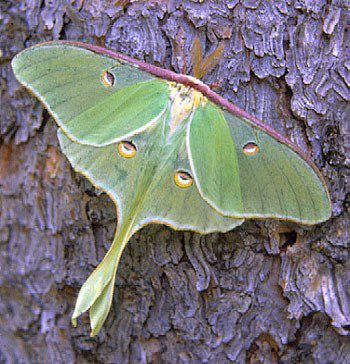

 Please report your sightings of
Please report your sightings of